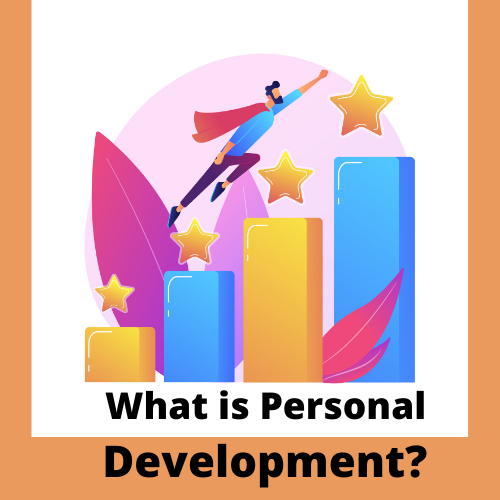Popular
Living in the Future with Smart Technology: Embracing a Connected Future

Living in the Future with Smart Technology: Embracing a Connected Future
Introduction
Imagine coming home each morning to a place where you are more familiar than you are with yourself. Natural light pours into the space as the curtains slowly open, and your favorite music begins to play in the background. When you enter the kitchen, the coffee maker has already made your ideal cup of coffee, exactly how you like it. Welcome to the world of smart technology-enabled futuristic living, where technology has been seamlessly incorporated into our daily lives to make them more efficient, individualized, and sustainable than ever.
A Tech Haven: Smart Homes
Future-Ready Connectivity and Integration
Smart houses are already a reality; they are no longer just a concept for the future. Our houses have evolved into technological havens where systems, appliances, and devices work together to improve our lives. This linked world is supported by the Internet of Things (IoT), which makes it possible to manage anything from our lighting to our security systems with a tap on our smartphones or a short voice command.
Redefining Convenience: The Best of Personalization
With startling precision, smart homes cater to our needs and tastes. We now rely on voice-activated virtual assistants like Siri, Alexa, or Google Assistant to manage tasks and provide answers. With a sense of individualized comprehension, they can tell you a joke, adjust the thermostat, or dim the lights.
Imagine arriving home after a long day and finding the ideal atmosphere for relaxing has already been created by the smart lighting system. Your smart home is aware of the time you prefer to go to bed, so as you get ready for a restful night’s sleep, the lights automatically dim and your favorite calming music begins to play.
Energy Efficiency and Sustainability for a Greener Tomorrow
Smart houses not only provide convenience but also encourage sustainable living. You can monitor your energy use in real time with smart energy monitoring devices, which gives you the information you need to use electricity more wisely. Additionally, renewable energy sources, such as solar panels, enable you to capture clean solar energy, lowering your carbon footprint and helping to create a cleaner planet.
Peace of mind in the palm of your hand thanks to safety and security
Any living place must prioritize safety, and smart homes are no exception. Smart cameras, motion detectors, and doorbell cameras are just a few of the sophisticated security systems that allow you to monitor your house from anywhere in the world. To guarantee the safety of your loved ones and possessions, receive immediate alerts on your smartphone if any suspicious activity is discovered. This will allow you to take immediate action.
Smart Cities: Where Sustainability and Efficiency Collide
A Future Vision: Smart Cities Emerge
As technology develops, it transforms not only our homes but also the entire metropolitan environment. Every facet of urban life is optimized in smart cities to improve the quality of human experiences and protect resources, making them the epitome of efficiency and sustainability.
Connected and Effective: The IoT’s Power
Connectivity serves as the cornerstone for smart cities. IoT connects diverse urban elements including waste management, electricity grids, and transportation systems, allowing data-driven decision-making and real-time modifications to meet the demands of inhabitants.
Transportation Revolutionizing for a Smooth Commute
Transportation becomes simple in smart cities. Modern traffic management techniques guarantee seamless traffic flow, lowering congestion and commuting times. With real-time updates on timetables and availability, public transit becomes more effective, making it simpler and more comfortable to go around the city without relying on private vehicles.
Intelligent Infrastructure and Waste Management: Sustainability at Its Core
By embracing environmentally friendly practices and energy-efficient construction, smart cities prioritize sustainability. Urban planning incorporates green spaces to improve air quality and promote biodiversity. Smart technologies that optimize garbage collection and recycling have transformed waste management, minimizing the negative environmental effects of urban living.
Privacy and Development: The Challenge of Data Governance
Protecting residents’ privacy becomes a top priority as cities collect massive volumes of data for smart devices. To guarantee that citizens trust smart city efforts, it is crucial to strike the correct balance between innovation and data protection.
The Minds Behind Futuristic Living: AI and Machine Learning
The Influence of Machine Learning and Artificial Intelligence
The brains underpinning futuristic living are machine learning (ML) and artificial intelligence (AI). With the help of these technologies, our houses, cities, and portable electronics can all learn from our actions, recognize our preferences, and give us experiences that are personalized.
AI-Powered Virtual Companions as Your Personal Assistant
Virtual assistants with AI capabilities are at the center of this change. They don’t just follow our instructions; they also pick up on our patterns, foresee our requirements, and actively help us in our daily lives. These digital friends have become indispensable, doing anything from reminding us of appointments to recommending new meals based on our dietary choices.
Healthcare Revolution: AI’s Impact on Medicine
AI is a major game-changer in the healthcare industry. AI is transforming medicine, giving us better insights and tools to improve our health, from early disease detection through predictive algorithms to individualized treatment regimens based on genetic data.
Conducting Ethical Navigation: Responsible AI Application
We must proceed cautiously as AI’s influence grows to guarantee that it is used sensibly and morally. For AI to serve humanity as a whole in the future, challenges like bias in AI algorithms and data privacy concerns must be addressed.
The Connected Self and Wearable Technology
Technology in clothing: An extension of the self
The idea of connected living is elevated to a whole new level by wearable technology. Our lives are made more informed and engaged by these technologies that are worn on our bodies and track our health, and activities, and even augmented reality.
A Healthier You: Taking Charge of Your Own Wellness
Imagine being accompanied by a personal health coach all day who will help you choose healthier options. Fitbits and smartwatches are examples of wearable technology that accomplish this. They monitor our heart rate, sleep habits, and physical activity, giving us the tools we need to take control of our health and well-being.
Seamless Interaction: Beyond Augmented Reality
Wearable technology is changing how we engage with the world in ways beyond health and fitness. For example, augmented reality (AR) glasses overlay digital data on the actual environment to improve experiences in industries like education, navigation, and gaming.
The Future of Human-Machine Interaction Will Be With Brain-Computer Interfaces
Brain-computer interfaces have the potential to lead to much more intriguing future possibilities. These revolutionary technologies may enable direct brain-to-computer connection, obfuscating the distinction between humans and machines.
See Also: Embracing Sustainable Living in the Digital Age with Eco-friendly Smart Homes
Climate Change and the Need for Action
Smart Technology for a Sustainable Future: A Greener Path
Sustainability must continue to be a top priority in our quest for futuristic living. From environmentally friendly smart homes to energy-efficient smart cities, smart technology gives us the means to forge a more environmentally responsible future.
Creating eco-friendly smart homes
Home is where sustainable living starts. Numerous opportunities exist in smart homes to cut waste and conserve resources. We may design homes that work with the environment by using water management systems and eco-friendly building materials.
Climate action in smart cities
Smart technology has an impact on large cities in addition to specific residences. In order to lessen their environmental impact and battle climate change, smart cities embrace sustainability in all aspects of their infrastructure, transportation, and waste management practices.
Corporate Social Responsibility and the Tech Sector
Governments and individuals are not the only parties responsible for sustainability; businesses also have a big part to play. In order to advance green technologies, technology businesses must adopt sustainable practices throughout the supply chain and in manufacturing.
A Joint Initiative: Society’s Impact on the Future
The creation of a sustainable and futuristic environment necessitates joint efforts by citizens, organizations, and businesses. We can create a better future for future generations by making thoughtful decisions in our daily lives and backing sustainable policies.
Smart technology-enabled living is becoming a reality right before our eyes. More than we ever could have imagined, our houses are smarter, our cities are more efficient, and our lives are more connected. Remembering our responsibility to use smart technology for the greater good, to create a sustainable future, and to make sure that the human touch stays at the center of our linked tomorrow is important as we embrace this new era of technology.
We can create a world where innovation acts as a catalyst for a happier, more inclusive, and harmonious society by combining innovation with empathy and ethics. The future is arrived and is up to us to create it.
Empowering All Through Accessibility and Inclusivity
We must not overlook the significance of accessibility and inclusivity as we plunge into the world of smart technology-enabled future living. Although smart technology has the potential to improve lives, it must be available to all people, regardless of their age, aptitude, or financial situation.
Developing Smart Inclusive Solutions
All societal members will gain from these breakthroughs if inclusive design principles are used while creating smart homes and cities. Disability consideration must be given top priority. Technology may become a potent weapon for more freedom and empowerment with the help of inclusive design, which can include voice-activated instructions for people with restricted mobility and user-friendly interfaces for people with visual impairments.
Achieving Digital Divide Closure
The digital divide must be addressed in order to close the gap between those who have access to technology and those who do not as we progress toward a more connected future. More people can profit from future living through initiatives that aim to give impoverished communities affordable and accessible smart devices.
Training and Education in Technological Literacy
To embrace futuristic living, technology knowledge becomes as important as accessibility. To ensure that people from all walks of life can comfortably explore and utilize smart technology to its utmost potential, education and training programs should be put in place. Greater social and economic prospects could result from this empowerment for all societal members.
See Also: 7 Best Home Automation Systems 2023
Aging Populations’ Empowerment
For aging populations, smart technology can be a game-changer by allowing them to age in place with dignity and freedom. Seniors can preserve their independence while receiving crucial support for their health and safety with the help of wearable technology, remote monitoring, and smart home technologies.
By establishing inclusion and accessibility as tenets of smart technology-enabled futuristic living, we not only realize the full potential of technology but also build a society that is more just and equal. As we welcome this exciting new era, our collaborative efforts must ensure that no one is left behind.
Smart technology-enabled futuristic life is an inspiring path of invention and advancement. Technology opens up new vistas of comfort, effectiveness, sustainability, and inclusivity as it smoothly integrates into our life. Our world is changing quickly, from the tailored comforts of our smart homes to the linked efficiency of smart cities.
Despite the wonders of technology, we must not forget the responsibilities it carries. In order to protect our planet for future generations, we must work toward sustainable solutions. To make sure that smart technology upholds individual rights and values, we must place a high priority on privacy and ethical issues. Above all, we must work toward inclusivity and accessibility to ensure that no one is left behind in the digital era.
We hold the ability to influence this interconnected tomorrow. We can create a society where futuristic living is not only a fantasy but a reality for everyone by embracing technology with empathy and understanding. Remembering that the human spirit is at the center of futuristic life will help us to navigate this trip and create a future that empowers, enlightens, and unifies us all.
AI that is morally sound and responsible tech adoption
Addressing the ethical ramifications and responsible use of artificial intelligence (AI) and other cutting-edge technologies is crucial as we go deeper into the world of smart technology-enabled futuristic life. While AI has a great deal of potential to improve our lives, it also poses difficulties that must be carefully considered.
AI algorithm transparency and accountability
From individualized suggestions to medical diagnoses, AI systems make crucial judgments that have a significant impact on our lives. Making sure that these algorithms are open, clear, and accountable is essential. For AI to be trusted and for results to be fair, it is crucial to understand how decisions are made.
Keeping an eye out for bias and discrimination
The data that AI systems are taught determines how objective they are. AI algorithms may reinforce biases found in historical data, producing skewed results that may disproportionately affect particular groups. A broad and inclusive data source as well as constant monitoring are needed to address bias in AI.
Maintaining Data Security and Privacy
Smart technology integration frequently entails the gathering and processing of enormous volumes of personal data. It is crucial to keep this data secure and protect people’s privacy. To prevent unauthorized access to user data, it is crucial to provide strong data encryption, stringent data access rules, and transparent consent methods.
See Also: Smart Home Devices – Google Home Mini
Use of Facial Recognition and Surveillance in a Responsible Manner
Technologies for facial recognition and surveillance can be effective tools for security and identification. However, its use needs to be strictly monitored to avoid abuse and privacy breaches. To find a balance between individual rights and the safety of the general public, clear rules and stringent oversight are required.
Not replacing humans, but empowering them
Concerns regarding job loss and the workforce’s influence are being raised by the emergence of AI and automation. Adopting technology responsibly should emphasize strengthening people rather than displacing them. We can ensure a smooth transition and develop a workforce that can adapt to the changing environment by investing in retraining and upskilling programs.
Promoting Innovation and Ethical Tech Development
In its research and development efforts, the tech sector must give ethical considerations a top priority. In order to develop rules and standards that support responsible tech innovation, collaboration between politicians, tech businesses, and specialists from other sectors is essential.
Public Awareness and Education
Fostering the safe adoption of AI and smart technology depends on raising public awareness and comprehension of these technologies. Educational programs can help people become more knowledgeable about the technology they use and increase their awareness of the potential drawbacks and benefits.
In conclusion, we must not ignore the ethical implications of this technological transformation as we embrace smart technology and future life. The principles of responsible adoption, openness, accountability, and inclusivity ought to direct our future course. We can build a connected future that not only improves our lives but also upholds our beliefs and respects the dignity of every person by integrating technical breakthroughs with ethical ideals. The future is bright and ethical, and it is our common duty to lead the way in that direction.












